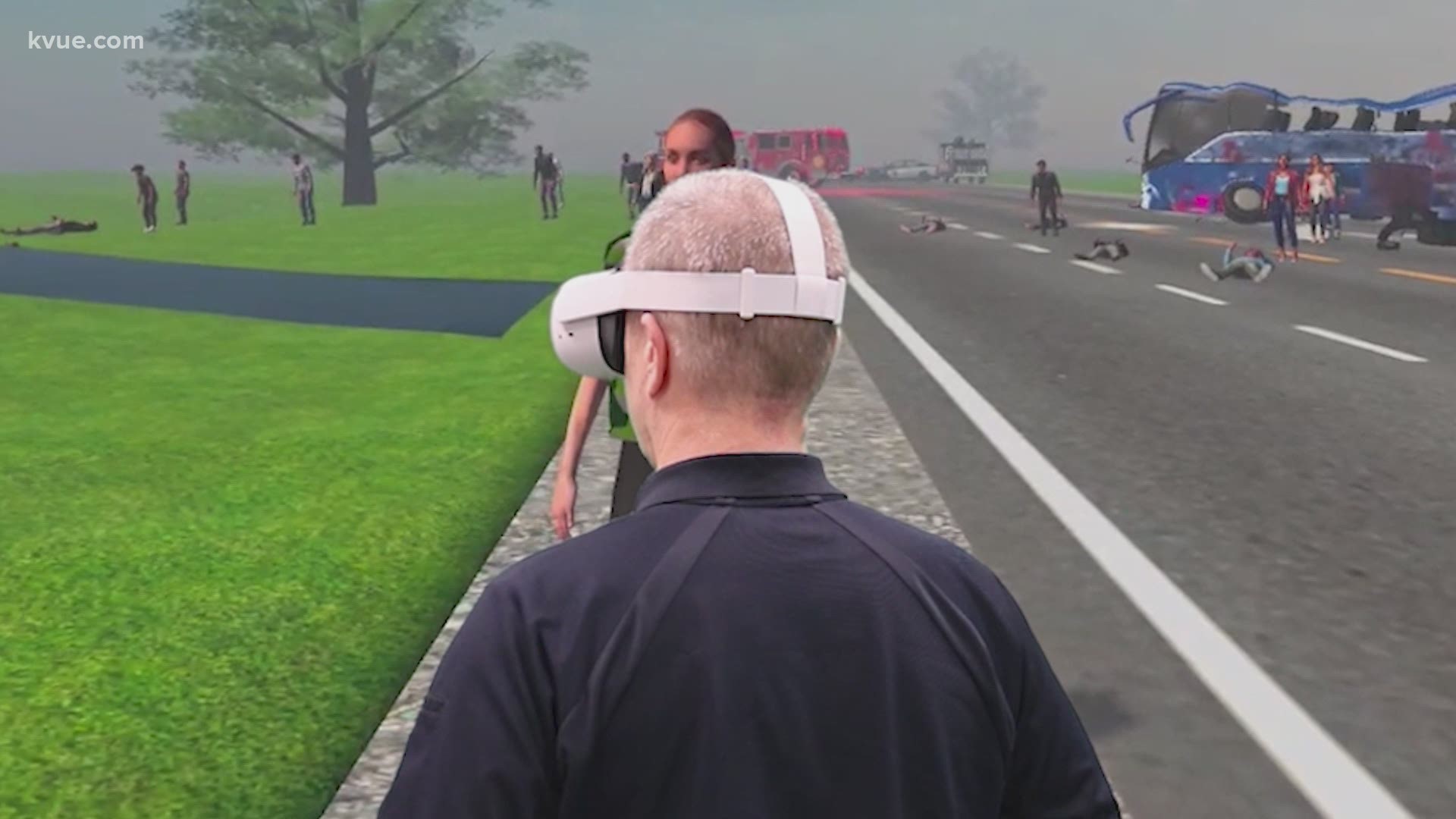AUSTIN, Texas — The City of Austin is using virtual reality technology to train first responders, in partnership with a local startup called Augmented Training Systems.
The training programs focus on things that don't happen often but are serious, like mass casualties and the use of the ambulance bus.
A commander with Austin-Travis County EMS said with COVID-19, many hands-on, in-person training events have been canceled, so this virtual reality training is a good alternative.
"A first responder will get trained on these skills and then not respond to a disaster for a number of years. A 'just in time' VR training allows us to refresh those skills quickly, without needing the physical equipment or set-up," Commander Keith Noble said. "We can do the training at the station, or at home, and can repeat the training over and over."
"For first responders, it’s not an option to postpone training. We have to be ready to respond to a crisis, no matter what," Noble continued. "This technology is a good fit for today’s environment where we’re doing everything virtually. It’s safe and it’s effective."
Mass casualty training is also expensive so without virtual reality tools, ATCEMS is only able to do the training once or twice each year.
According to the City, testing during the development of the virtual reality training showed a higher recall of skills and mission-critical tasks, a reduction in errors and a decrease in the time it took to complete a task for trainees who took the virtual training versus those that took just in-person training.
"The platform allows you to track training and accuracy of performance. It also introduces elements of gamification and repetition, both of which help with knowledge retention and skill recall," said Dr. Scott Smith, president of Augmented Training Systems.
"Augmented Training Systems did the science, which is an important part in all of this. They did the research, showing that this can improve our training, especially when added to physical trainings. It can be done more frequently, more cheaply, and at the convenience and even desire of the first responders,” said Ted Lehr, a data architect for the City's Communication and Technology Management department.
PEOPLE ARE ALSO READING:

